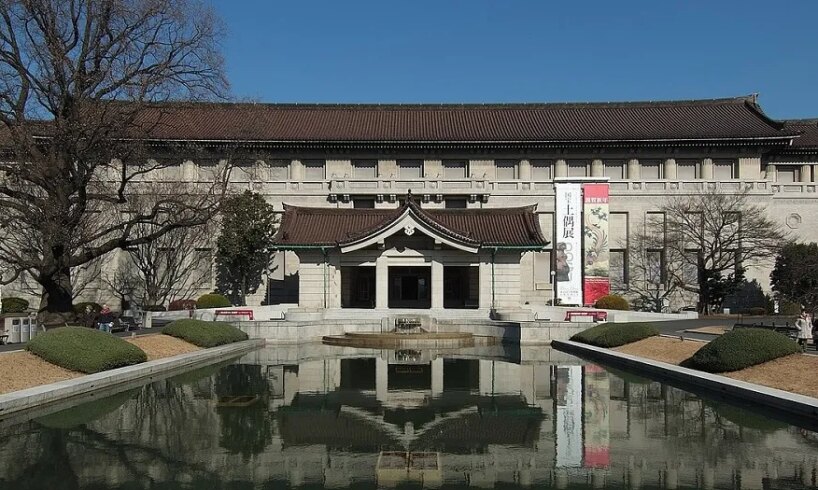
Public reactions to redevelopment plan for Japan’s largest collection of historically significant artwork has been less than positive.
Located at the edge of Ueno Park, the Tokyo National Museum houses one of the most important collections of historically significant artistic and cultural artifacts in Japan, containing an estimated 10 percent of all the works officially designated as National Treasures in the country. Adult tickets are priced at 1,500 yen (US$10) by pre-sale or 1,700 yen at the door, which is a bit on the high side for museum admission in Japan, but doesn’t feel exorbitant, considering the care required in preserving the items inside.
And like many museums, the Tokyo National Museum, which is operated by a government-owned corporation, periodically has donation drives and crowdfunding campaigns. The purpose of its latest one is rubbing a lot of people the wrong way, though, since the museum is looking for handouts to cover the cost of removing its pond and replacing it with a space to be used for beer gardens and music events.
The pond, shown above, is located in front of the museum’s Main Building, or Honkan, which was constructed between 1932 and 1938. Under the Tohaku Open Park Project, announced by museum director Makoto Fujiwara last Monday, the pond will be demolished and covered with concrete, and its surrounding shrubbery removed to create more grassy lawn space.
The additional solid ground, the planners say, will allow the area in front of the main building to be used as a venue for outdoor events, with beer gardens and concerts specifically mentioned in the press release.
9 times out of 10 beer garden plans will get an enthusiastic thumbs up from most people in Japan, but reactions so far to the Tohaku Open Park Project have been much less positive. The Tokyo National Museum was Japan’s first national museum, and as a government-affiliated facility, many are saying that hosting loud, booze-fueled events is an inappropriate use of its grounds. Many are also lamenting the loss of the plaza’s classical aesthetics, particularly after sundown when the surface of the water takes on the warm glow of nearby lights and serves as a mirror reflecting the uniquely beautiful museum architecture.
東京国立博物館の池がなくなるなんて
静謐で荘厳なものを国が守って欲しい
ここから意見が送れますhttps://t.co/I5DbWutEoO
写真は2023年の今頃#トーハク #東京国立博物館 https://t.co/HYiIdjJMBb pic.twitter.com/o0GoL1Vsha
— 原 知恵子 Chieko Hara ( chienoix ) Praha (@chienoix_praha) November 13, 2025
東京国立博物館の池のある風景 pic.twitter.com/5Xa27yVWGH
— 在華坊 (@zaikabou) November 12, 2025
トーハク正面玄関の池は、晴れていれば水面に「逆さ本館」が映って 東京国立博物館をより美しく唯一無二のものにしていたと思うから、残念だなあ🦆 https://t.co/5gjd8cjaf8 pic.twitter.com/k38chGCStQ
— くるっくる*避難用🍉 (@sannenseabura2) November 12, 2025
So while the planners are saying the purpose of the redevelopment is to “create a relaxing place that all people can comfortably and safely use in their own way,” many online commenters are saying the way they want to use the plaza is just as they originally did, tranquilly admiring the view, including the pond (and the planners mention of safety is laughable, as the pond isn’t at all deep and no drowning incidents have taken place in it). Adding insult to injury, in detractors’ eyes, is that not only is the Tokyo National Museum planning to pave over the pond, it’s asking the public for donations to fund the Tohaku Open Park Project, and is currently accepting donations through its website.
All of this has led to such angry online comments as:
“So they’re just spending money to destroy something of value? I have no idea why they think the National Museum needs to hold concerts and beer garden events.”
“I’ve never seen one of these redevelopment ‘projects’ that actually feels like an improvement. It’s always just some cliched eyesore that messes up the local scenery and environment.”
“You don’t go to a museum to drink beer and listen to music. The museum is supposed to be our nation’s greatest treasure trove of knowledge, so let it be that, there’s no need to try to attract everyone and everybody. If it’s a place where people who want to connect with the knowledge of people from prior parts of history, that’s all it needs to be.”
“Please keep the plaza as the quiet, beautiful place that it’s always been.”
“Oh, so they’re just doing this to hold events and get more money? Pitiful.”
“If they’re going to abandon their pride as a museum, they should just go all the way with it. Put in a sake corner where you can drink in front of the Buddhist statues on display. Use the National Treasure katanas to cut tuna sashimi…Just leave the existing façade, hollow the interior out, and build a modern entertainment complex on top of it.”
Comments in favor of the plan have been much fewer and farther between, but those that have been made contend that the museum’s pond is less than majestic in appearance, and others speculate that the cost of maintaining it isn’t worth the marginal aesthetic boost it provides. Lending credibility to the speculation that cost is a factor in the decision to get rid of the pond, it’s been drained of water for some time now.
東京国立博物館の庭の池を埋め立ててイベントスペースにする案は愚策すぎる。
池の水は、もうだいぶ前から抜かれたままだ。
国立劇場も閉鎖されたまま。
行く末を憂う胸が痛む問題だ。 pic.twitter.com/rIrDjYsvgO
— 長宗我部元ちな (@chinasyogi) November 12, 2025
However, numerous commenters have countered that if maintenance costs are an issue, they’d rather the Tokyo National Museum be soliciting funds to be used to cover those costs, not to cover the pond with concrete. Others have said that getting rid of the pond because it’s not financially feasible to maintain is a decision they can see the logic in, but if that’s the case, the museum should just say so, rather than trying to feed people lines about the redevelopment being necessary to “create a safe and relaxing place for everybody.”
Still, at the moment the Tohaku Open Park Project is scheduled to go on as planned, with an estimated completion date of March 2027. Those who think it’s the right call can contribute donations for the redevelopment through the Tokyo National Museum website here, while those of the opposite opinion can make their feelings known through the museum’s general feedback form here.
Source: Tokyo National Museum (1, 2) via Hachima Kiko, Tiwtter/@JapanArchitects
Top image: Wikipedia/Wiiii
Insert images: Tokyo National Museum
● Want to hear about SoraNews24’s latest articles as soon as they’re published? Follow us on Facebook and Twitter!
Like this:
Like Loading…





